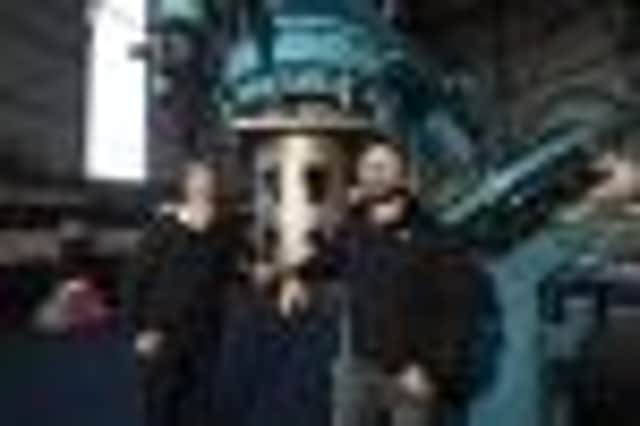Discovery offers insight into ‘cosmic dawn’ of time


Professor Jim Dunlop and Dr Ross McLure at Edinburgh University’s Institute for Astronomy used Nasa’s Hubble Space Telescope to observe what is believed to be the most distant galaxy ever seen.
The new galaxy, glimpsed in a tiny patch of sky called the Hubble Ultra Deep Field, is urther into space than previous telescopes could capture.
Advertisement
Hide AdAdvertisement
Hide AdAstronomers calculate that the galaxy – named UDFj-39546284 after its co-ordinates – was formed more than 13 billion years ago when the universe was less than 4 per cent of the size it is now.


Its discovery, during a cosmic census-taking exercise, supports the idea that the first galaxies did not form in a sudden burst, but gradually assembled stars, causing the universe to slowly emerge from darkness into a “cosmic dawn”.
Last night Professor Dunlop, who is based at the Royal Observatory in Edinburgh, said the findings were “greatly rewarding” after a great deal of hard work and analysis of data.
“The main reaction was one of satisfaction that the observations had come to fruition and paid off. To finally get to this stage and for the data to deliver what it did was a greatly rewarding experience.”
Professor Dunlop was the key member of the team which used Hubble’s Wide Field Camera 3 to peer deeper into space in near-infrared light than any previous Hubble observations.
The observations were made over six weeks in August and September this year.
The team estimated the galaxy distances by studying their colours through a carefully chosen set of four filters at specific near infrared wavelengths.
“We were looking for a distinctive ‘colour signature’ which shows how much the light has been stretched to the red,” Professor Dunlop said.
Advertisement
Hide AdAdvertisement
Hide Ad“We added an additional filter, and undertook much deeper exposures in some filters than in earlier work in order to convincingly reject the possibility that some of our galaxies might be foreground objects.”
The most distant galaxy of the seven is described as being at “redshift” 11.9.
Redshift measures how much a galaxy’s ultraviolet light has been “stretched” to infrared wavelengths by the expansion of the Universe.
The larger the redshift, the more distant the galaxy, and hence, (due to the finite speed of light) the further we are seeing back in time.
A major goal was to calculate how rapidly the number of galaxies increased over time in the early universe.
This measure is the key evidence for how quickly galaxies build up their constituent stars.
Dr McLure said: “This discovery of a significant population of galaxies at redshifts greater than 8, coupled with our new analysis of the number of properties and galaxies at redshift 7 and 8, support the idea that galaxies assembled progressively over time.”
Richard Ellis, of the California Institute of Technology in Pasadena, who also contributed to the research, said: “Our study has taken the subject forward in two ways.
Advertisement
Hide AdAdvertisement
Hide Ad“First, we have used Hubble to make longer exposures. The added depth is essential to reliably probe the early period of cosmic history.
“Second, we have used Hubble’s available colour filters very effectively to more precisely measure galaxy distances.”
The results from the UDF12 research suggest there will be many undiscovered galaxies deeper in space waiting to be discovered by the James Webb Space Telescope, which will be launched in 2018.
The team’s findings are to be published in the Astrophysical Journal Letters.